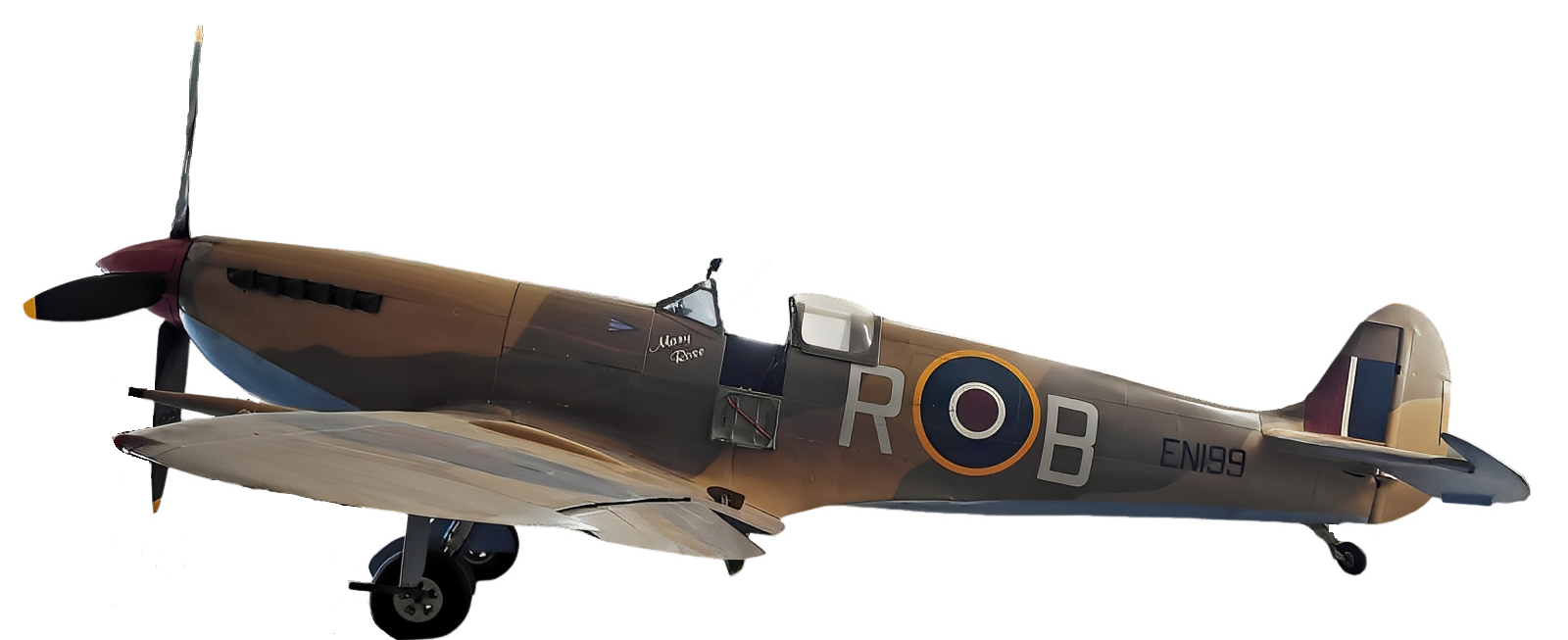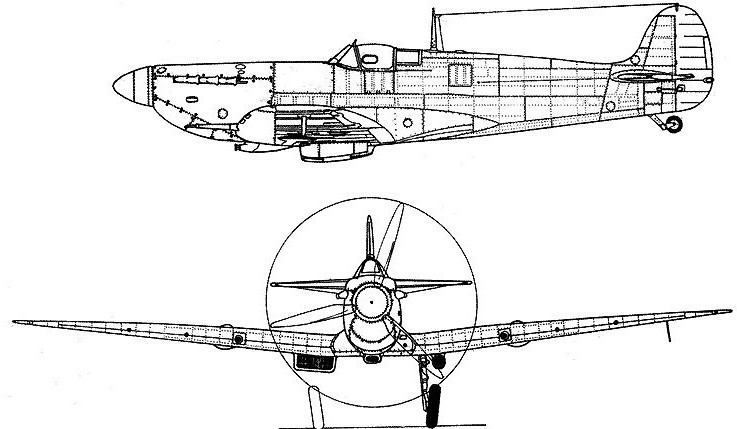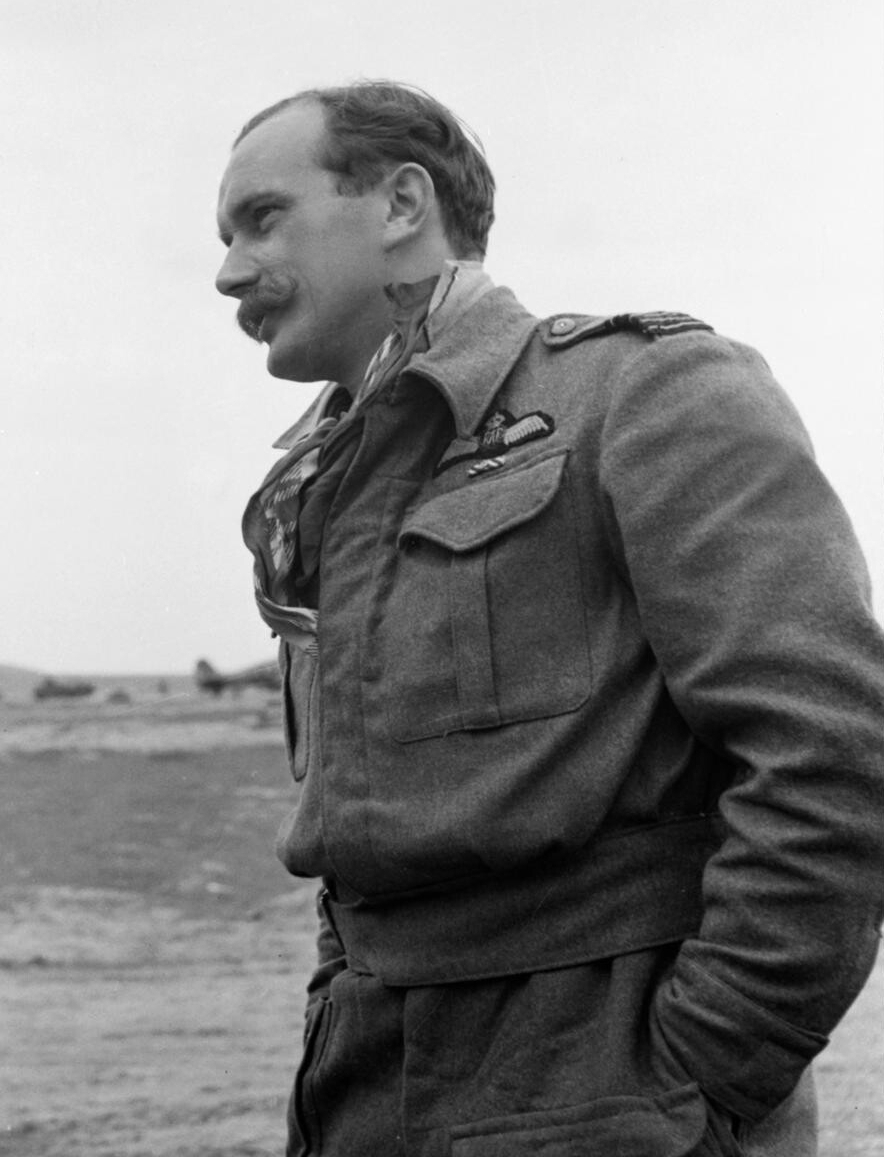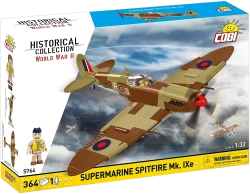
Did you know:
- Designer Reginald J. Mitchell began work on a new fighter according to RAF specifications as early as 1931.
- Eventually, after many modifications, probably the most famous fighter of World War II was born, though the most numerous aircraft in RAF service remained the Hawker Hurricane.
- The very first Spitfire entered service on August 4, 1938, with the RAF’s No. 19 Squadron.
- Other aircraft were delivered to squadrons at a rate of one per week.
- On its first operational flight with No. 19 Squadron, the pilot had to swear not to forget to lower the landing gear upon landing — something pilots of older aircraft weren’t used to doing.
- Spitfires were the first aircraft to use flush rivets to maintain a low wing profile, along with many other advanced technologies for the time.
- German aircraft were also very good, but they lacked one crucial feature — the extraordinarily reliable and powerful Rolls-Royce engine.
- The aircraft with serial number RB N199 Marry Rose was painted in desert camouflage of No. 81 Squadron under the command of Ronald "Ras" Berry.
- R. Berry was called up to the Air Force in 1939 as a reserve pilot with No. 603 Squadron, with whom he took part in the Battle of Britain, scoring 14 kills, 10 shared, and 9 probable kills.
- On August 31, 1940, he shot down three Messerschmitts in a single day, earning him the nickname "Mighty Atom".
- This particular aircraft participated in well-known Allied air operations: Torch and Operation Husky.
- After the war, R. Berry was transferred to Malta to carry out meteorological flights. In December 1946, the aircraft was damaged by a windstorm on the tarmac and was retired from RAF service.
- The aircraft deteriorated due to vandalism and weather until 1990, when it was taken over by a group of enthusiasts led by Ray Polidano, who managed to fully restore it after five years of intensive work.
- Today, the Spitfire N199 can be seen at the Malta Aviation Museum.
- R. Berry remained in the Air Force until 1965, retiring with the rank of Air Commodore.
Technical specifications:
- dimensions: wingspan 9.93 m, length 9.54 m, height 3.86 m
- empty weight 2,309 kg, maximum takeoff weight 3,450 kg
- power unit: liquid-cooled twelve-cylinder Rolls-Royce Merlin 66 engine with output of 1,250 kW
- three-blade propeller, diameter 3.29 m
- maximum speed 650 km/h
- climb rate 23.9 m/s
- fuel tank capacity 386 l
- service ceiling 12,954 m
- range 1,577 km
- armament: 2× 20 mm Hispano MK II cannons + 2× 12.7 mm Browning MGs
- crew: 1
From the memories of pilot Ronald "Ras" Berry about the Battle of Britain:

“In the evening I was back in the air. I saw a large swarm of fighters around a group of bombers, with explosions of falling bombs beneath them... Enraged by the bombing, I chased a Me 109 flying over the muddy shores near Shoeburyness. I circled above him. I managed to hit his left wing, and the German was forced to land in the green fields below us — and I saw the pilot standing next to the wrecked aircraft, shaking his fist. It was a satisfying end to an action-packed day.”





